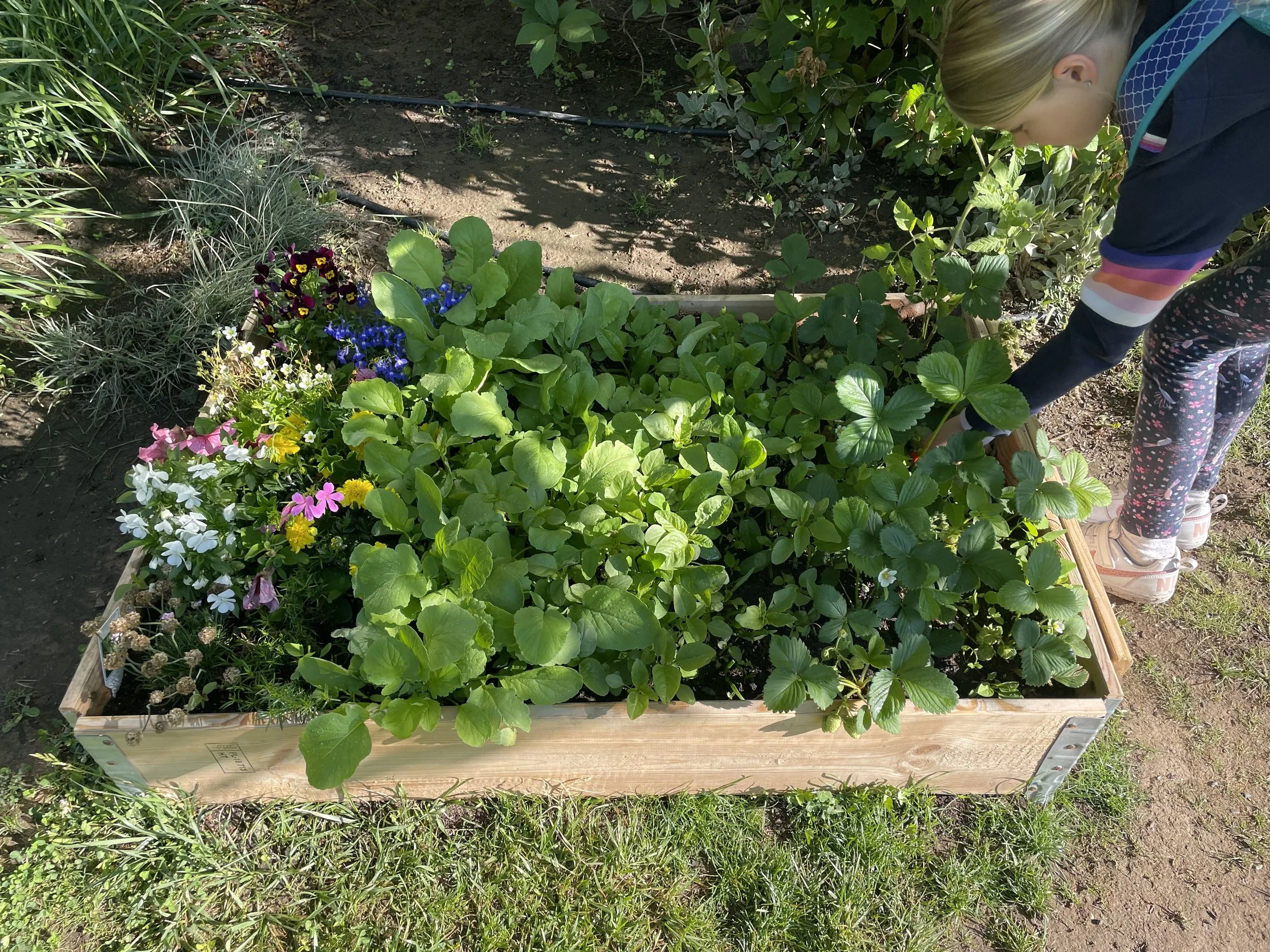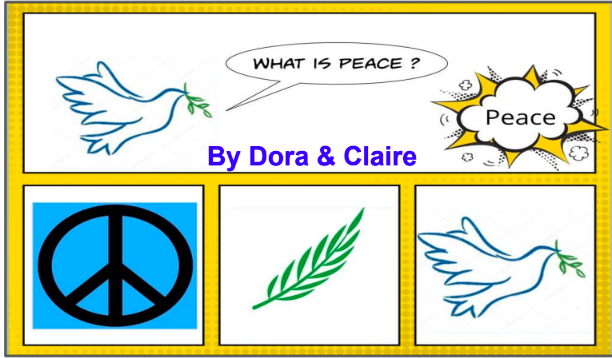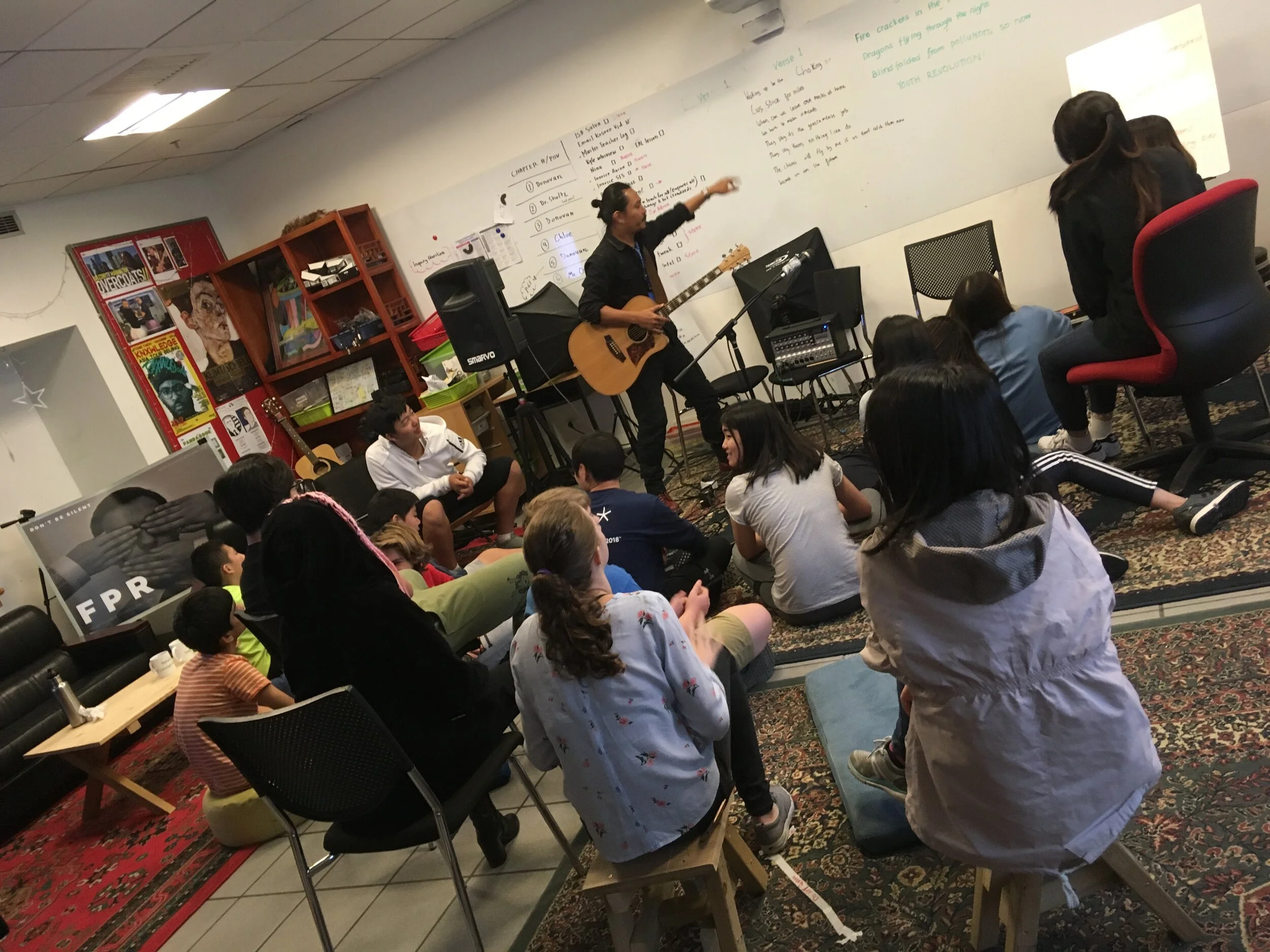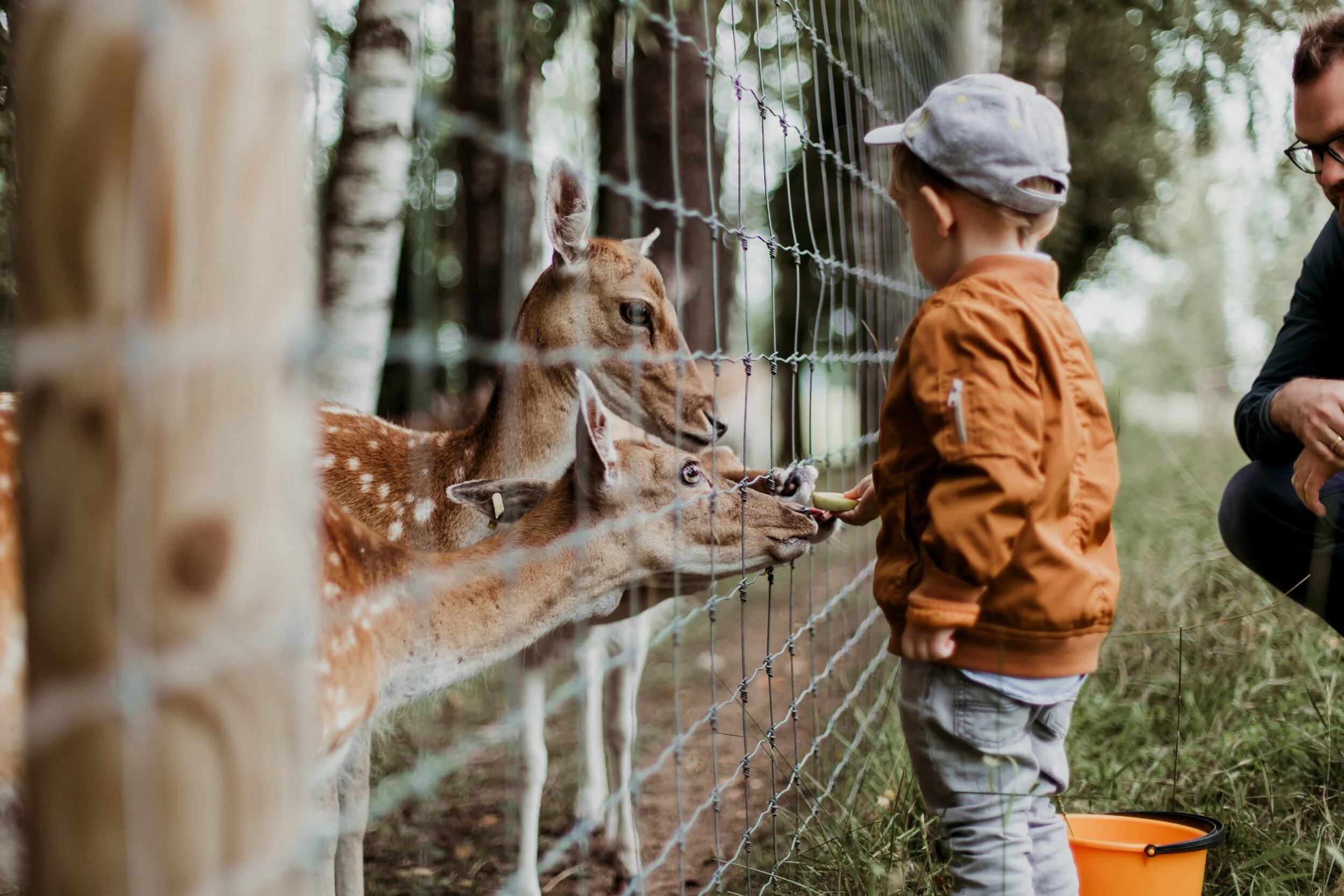Taking it Outside: Learning in the Garden
Kerry Craig is the Outdoor Learning teacher at the International School of Prague (ISP) and she is thrilled to see how this new program is growing roots and gaining momentum.
“We’re looking at the Sustainable Development Goals throughout the school and we’re about to start the PYP (Primary Years Program) and MYP (Middle Years Program),” says Kerry. “It’s new at our school to use a sustainability lens at these levels and we want to do this intentionally, to create embedded and integrated learning experiences throughout the program. I can see how our Outdoor Learning program is going to play a key role.”
Read More
Eco-Photography for Teachers: A Fun & Meaningful PL Summer Experience
This July, Inspire Citizens is offering an Eco Photography camp for teachers, a month of fun and meaningful professional learning that will get you outside, viewing the world through a creative lens, and that will also equip you with skills to introduce your students to Eco Photography.
Ivy Yan, an Inspire Citizens and Two Birds facilitator, and Steve Sostak (co-founder of Inspire Citizens) have teamed up to create a dynamic and engaging experience for educators.
Read More
Designing with Sustainability in Mind
What student wouldn’t love working in a design lab to create new products, designs and prototypes? Especially a design lab complete with multiple 3D printers and machines for working with wood, textiles, jewelry and any other product you could imagine?
Students at Seoul Foreign School in South Korea have access to state-of-the-art design labs and maker spaces, and high school teacher Neil Henderson has been working with Inspire Citizens’s Aaron Moniz to create innovative learning experiences this year.
Read More
Taking “Be the Change” Online
Just as a grade 2 unit called “Be the Change” was getting underway this year, Shanghai went into a serious lockdown for Covid-19 and schools went back online. Teacher Silvina Rubiano was determined this would not derail her students’ access to a robust Empathy to Impact experience, so she pivoted to focus on advocacy and digital storytelling. The result: deep student engagement and a campaign to spread peace to all international teachers in Shanghai.
Read More
Digital Storytelling for Impact
Two grade seven teachers at the International School of Bangkok used the power of collaboration to redesign a seventh grade unit about migration, and they couldn’t be happier with the results.
The teachers, Matt Piercy and Sabina Vogt, are experienced international educators and exemplary collaborators. They love working together and have had a lot of success combining their strengths and experiences to craft learning experiences for their students. When they partnered with Aaron and Scott from Inspire Citizens, that spirit of collaboration grew in exponential ways and the outcomes have exceeded expectations.
Read More
Curricular Design from Start to Finish: A Case Study
Four years ago, curriculum leaders and teachers at Concordia International School Shanghai decided they needed to overhaul the elementary school social studies curriculum. They knew they needed help for this massive task, and they called on the Inspire Citizens team to lead the charge.
Read More
Empowering Student Advocacy
When middle school teacher Liz Zadoo first talked to Inspire Citizens founder Aaron Moniz about how to embed advocacy into one of her grade 8 social studies units, she got so excited that she went home and spent her evening revising and upgrading her unit plan.
“I thought redesigning the unit would be a lot of work and there would be a lot of planning. When Aaron explained what advocacy could look like in the unit, I was so excited; I was able to use my existing unit plan but tweak it in meaningful ways,” says Liz.
The Inspire Citizens team is working with AES-Delhi to develop a whole-school approach to embedding service learning into curricular experiences, and this eighth grade example is one of several success stories..
Read More
Empathy to Impact Design Sprint: Shekou PYP
In concert with the vision and components of the Empathy to Impact system, SIS and IC launched into meaningful explorations of global competence, creativity and imagination, systems and futures thinking, and purposeful action all interconnected to interdisciplinary concepts, knowledge, skills, processes, and strategies. The aim was to bring out purposeful and action-based applied learning — a greater demonstration of the approaches to learning in the PYP and the SIS mission of being principled, caring, and innovative global citizens in a VUCA world.
Read More
Launching Personal Projects with Inspire Citizens: Why, What, How?
We see great evidence of transformative learning and engagement through developing a greater sense of vocation. We aim to be more explicit in highlighting the dynamic interdependence of the internal hopes, needs, and passions of the learner with local and/or global community needs and partners. When connected to enhanced actions, students exemplify empowered global citizens in a personal project space that calls for future-focused learning and change.
We believe personal projects, embedded into part of a school or learning community should be able to answer the following question: How might our personal projects and our entire learning community be connected to bigger stories — about the world, our place in it, and how we aim to shape a better future?
Read More
Constellation Mindset: Be Prepared to Be Needed. Be Prepared to Need Others. Be Prepared to Change. (Gr5)
We need greater interdependence and flexible leadership in a volatile and uncertain world. Therefore, even as early as primary school, students can experience how communities and organizations designed as constellations are dynamic and flexible networks. Each member of the team is able to both stand out and fit in at the same time, to form something greater. When leaders find the courage to distribute rather than hoard power, creativity multiplies, trust deepens and inclusivity expands.
In 2021, we have more work than ever to do in implementing and attaining the Sustainable Development Goals and targets. These goals and targets have the power to create a better world by 2030, by ending poverty, fighting inequality and addressing the urgency of climate change. Guided by the goals, it is now up to all of us, governments, businesses, civil society and the general public to work together to build a better future for everyone.
Read More
Tiny Classroom Concerts: Give a Social Movement a Soundtrack
“Protest songs give a social movement a soundtrack. From a songwriting perspective, they help you connect with your society by engaging with what you want to change, whether it be the minds of the people who disagree with your ideals, or the complacency of those who agree with you, so you can energize them into action
It’s easy to feel like there’s more you could be doing right now. Besides marching, reading, and donating, using that anger to write a protest song is a way that musicians can play their part. And creating art during this time is an important role in all of this.” - Berklee Online
Read More
Taste Buds: Food Design Thinking
MYP students meshed Empathy to Impact with food design, using this process to help generate ideas and final food concepts that were grounded in research, culture, sustainability and community action. The influence of decisions taken in a design stage radiates throughout the whole food system, from farm to table. To achieve a circular economy for food, design thinking is a critical element.
Read More
Kindergarten Engineers: Design and TV Studios for Imaginative Impact
Students engaged in explorations with Vex Robotics to build simple machines and apply and transfer their learning. While prototyping, creating models and drawings, and using problem-solution-impact sentence frames, students designed simple machines that could theoretically help to solve the issues. In preparation for the TV show, students looked at ISTE Global Collaborator standards, practiced making videos, recording videos, editing videos, adding voice overs to pictures, and filming each other in a DIY TV studio.
Read More
Grade 4 Theater: The Future is Ours
Students were not asked to solve the world’s problems, but to imagine the future they want and need. They were each invited to find the power within themselves to use theater to express creative and poignant foresight, inspiring others through screenwriting, direction and performance. Students devised the scripts and narration, students planned the production including visuals, and sound effects, students applied their workshops to begin to imagine and shape real visions of a better future.
Read More
Launch an IC Futures Media Member Station
Think deeply with your students about what you will need to be able to do to produce excellent and poignant journalism and storytelling: Mentors and partners, developing a mastery of language arts, technology integration skills, civic literacies, and interdisciplinary knowledge and skills will form a baseline but will also need agility depending on the context and direction of each story or production.
As you outline the goals for your member station’s impact, consider building an internal platform to house productions and publications while sharing your top stories and features with the Inspire Citizens Futures Media network. Importantly, think about your community assets and who your partners could be, who or what in your community could be featured as a story or investigation, and who is ultimately your focus audience.
Read More
Window: Creating the Text and Audiobook for a Picture-Only Book on Concepts of Exponential Change & Sustainable Development of Cities
Grade eight EAL students developed a nuanced interpretation of the book Window, a picture-only book about urbanization, development, and biodiversity loss seen through the eyes of the main character’s first twenty-four years of life. Students wrote original text, recorded a full cast reading for the thirteen pictures, and performed their interpretation for a grade four classroom.
Authentic writing and performance has high levels of literacy growth and engagement. In this case, students used the deconstruction of visual representations to craft storytelling related to global issues of sustainable cities, urbanization, and biodiversity, highlighting the power of embedded concepts of sustainability.
The quality and intentionality of expressive reading grew by leaps and bounds when authentic and meaningful publishing and deeper purpose was attached to a project endeavor.
Read More
Futures Thinking and Literacy: Writing Screenplays for Dystopian Fiction
In Steve’s middle school EAL classroom, students engaged with language arts within an interconnected framework of Sustainable Development Goals, MYP Global Contexts, SIOP framed content and language objectives, and WIDA literacy rubrics. The learning goal is rooted was rooted in empowering diverse student populations via global citizenship, multilingualism, multiculturalism, authentic literacy, and real-world projects and publications.
In dystopian screenwriting and theater or film production, students embark on authentic publication and inquiry-based literacy work — collaborating to create meaningful writing and technology-based projects that generate transformative learning and provocative solutions for global and local issues.
Read More
Innovate for Impact
As a culminating action of unit on the history of innovations and the impacts innovations have on societies, students were given the challenge of designing a future innovation to positively impact their local community given our current challenges and needs in 2020-21.
Students applied and transferred their knowledge, skills, and understandings, collaborated virtually, and designed a product to meet an identified need. They ran impact analyses on their innovations, and pitched their products to a series of SFS administrators and staff members as a means of direct research, advocacy, and taking action to positively impact the local community.
Read More
Interdisciplinary Exploration and Design of Future Zoos
By launching the unit with an exploration of the significance of conservation and its importance for global biodiversity and ecosystem health, students applied their MYP Math and Science research and design skills, knowledge, processes, and strategies to create digital blueprints of more ethical and humane conservation areas where animals could thrive.
Students researched endangered species, their habitats, food chains, adaptations and survival needs, and as ‘animal researchers’ designed a habitat that would allow these species to thrive. Students then took a map of the SFS campus, measured the area of its complex spaces, and matched the spatial requirements to the survival requirements of their chosen animal.
Although the design of the conservation area was theoretical, the application of skills into advocacy for sustainable development mimicked thinking like animal conservationists, zoologists, and architects working towards addressing the pros, cons, and roles of zoos in the future of ecosystems and biodiversity.
Read More
Community Well-Being Interdisciplinary Unit
Inherent and fundamental to Empathy to Impact and the IB Program is the ability to transfer interdisciplinary knowledge to real-world contexts and create opportunities for students to take action. Often, schools struggle to identify what holistic wellbeing means to a community and the interconnected nature of the different domains of wellness and the interdisciplinary nature of learning.
students identified a focus area of well-being that they wanted to investigate. They researched about the biological elements of well-being issues relevant to their community, while learning how to build empathy with their target audience, anticipate various viewpoints, and appeal to logic, emotion, and authority systems.
Students created a variety of media pieces, consistently reflected on processes, demonstrated their intentional application of content information, and engaged with community action and feedback.
Read More




















